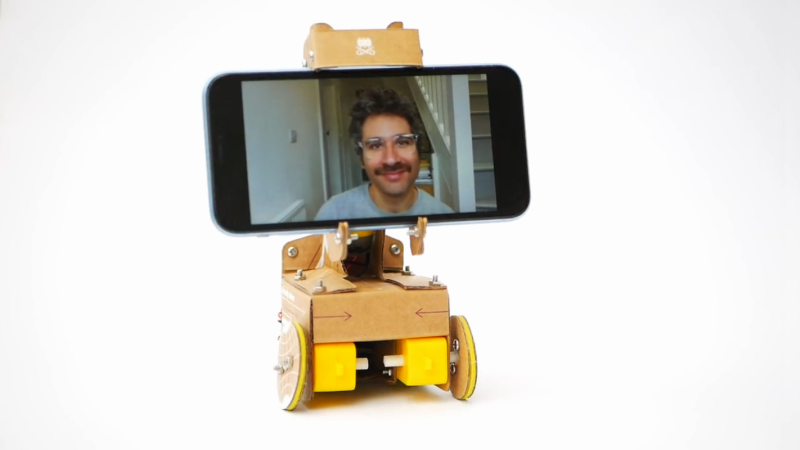As time marches on and a good percentage of us are still isolating from society at large, the progress of technology isn’t kept as stagnant. Earlier this year we featured a project about a much-needed small telepresence robot with an exceptionally low barrier for entry, and with the progress of time it has received several upgrades and some crowdfunding, all while preserving its original intent of a simple and easily-operated way of keeping in contact with others.
The new robot is still based on the cardboard design that holds a smartphone and drives it around using a microcontroller platform, but thanks to its small size and low power requirement this seems to suit it nicely. Improvements over the original design include a more robust one-size-fits-all phone mount and a more refined cardboard body. Also, since the small size is a little bit of a downside when navigating anywhere that isn’t a desk or counter, the new version makes it easier to make modifications such as adding a pedestal which can elevate the phone and improve the experience of the remote driver. A number of other optional modifications are possible as well, including a grabbing arm.
While telepresence robots unfortunately are needed now more than ever, we are happy to see people like [Ross] take on projects like this which will hopefully help improve our shared situation by allowing us to have a more involved level of contact with people we would otherwise prefer to see in person. If you’d like to build your own without waiting on the crowdfunding, be sure to check out the original project we featured back in April.
















We’ve been making these since 2010, and our source code and schematics are available on the wiki.
https://robots-everywhere.com/re_wiki/pub/web/Main.HomePage.html
I love the idea of these but the reliability of a decent internet connection where I live makes just a video call impossible.
Good old NBN …..
The National Broadband-in-name-only Network. It’s a shame that with so many people working from home now, that we haven’t seen more in the media about how shameful the iimplementation of NBN2.0 really has been, and how great it _could have_ been if only it had gone ahead as originally planned.
I’ve just set up a pihole ( https://pi-hole.net/ ) which helps reduce the amount of wasted bits that have to squeeze through the awful old copper in my suburb. It’s only been two days, but my experience has been positive so far. Much cheaper than financing my own fibre! I also removed a few extra splices from the old phone line in the ceiling, which seems to have clawed a few more kilobits out of the connection.